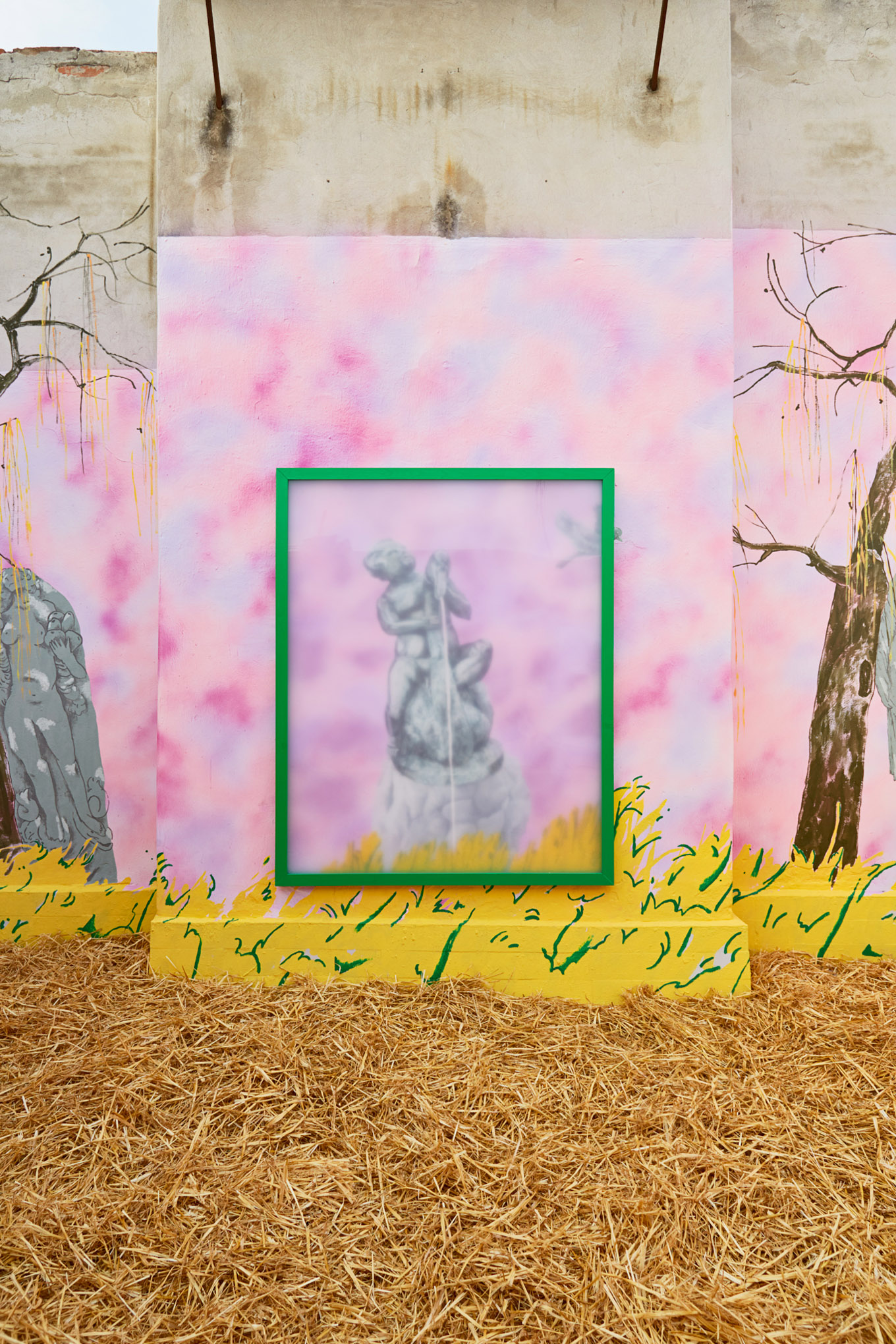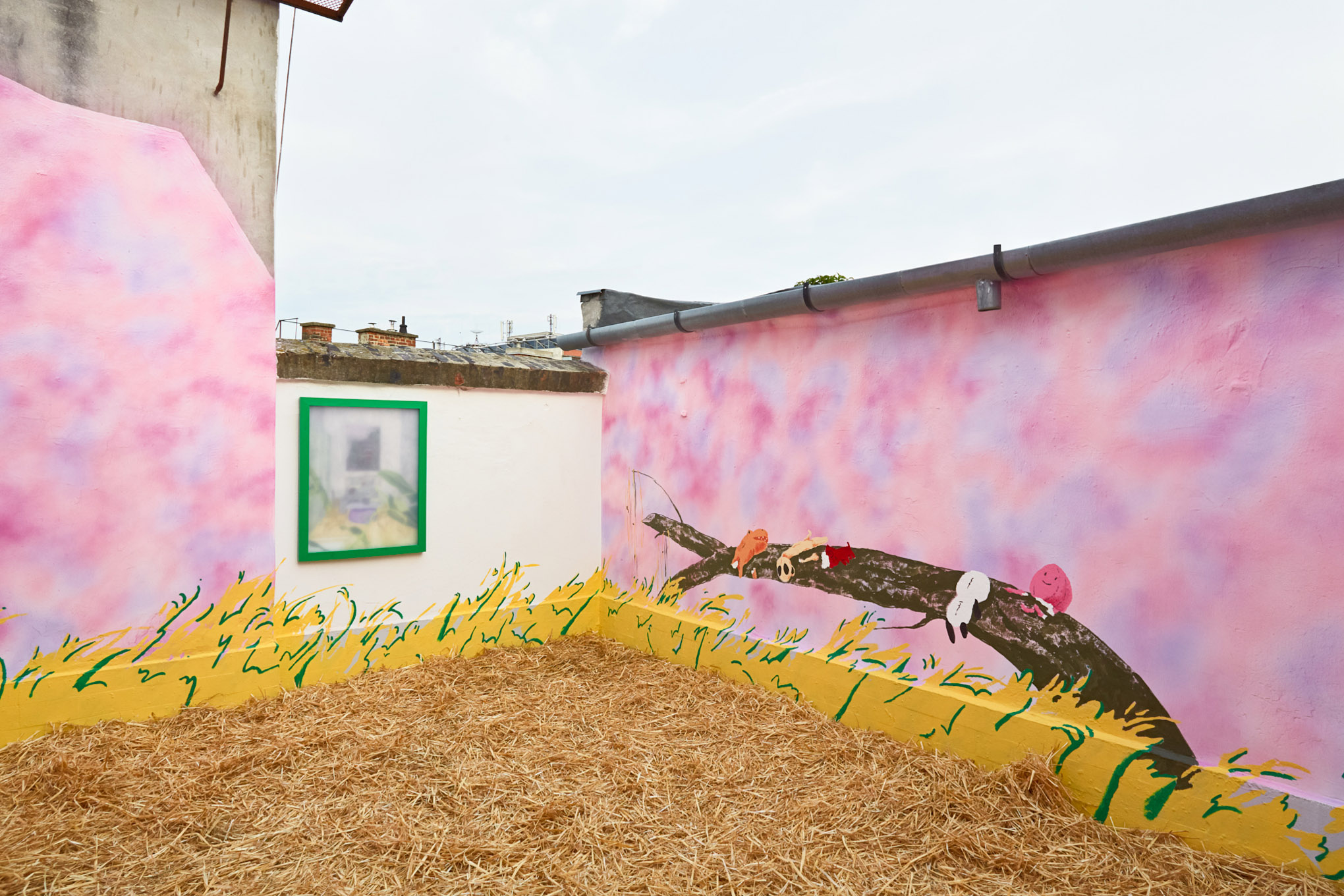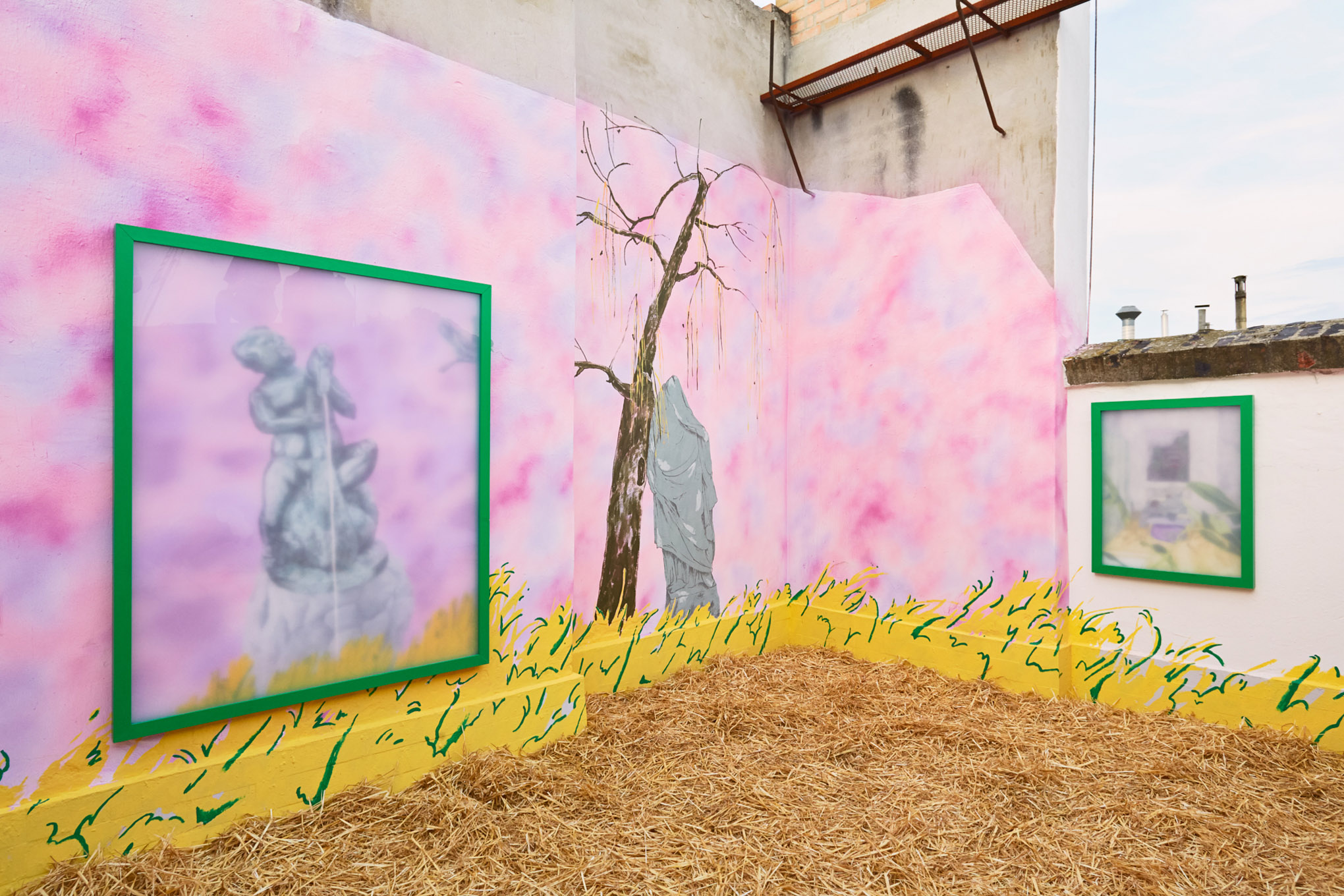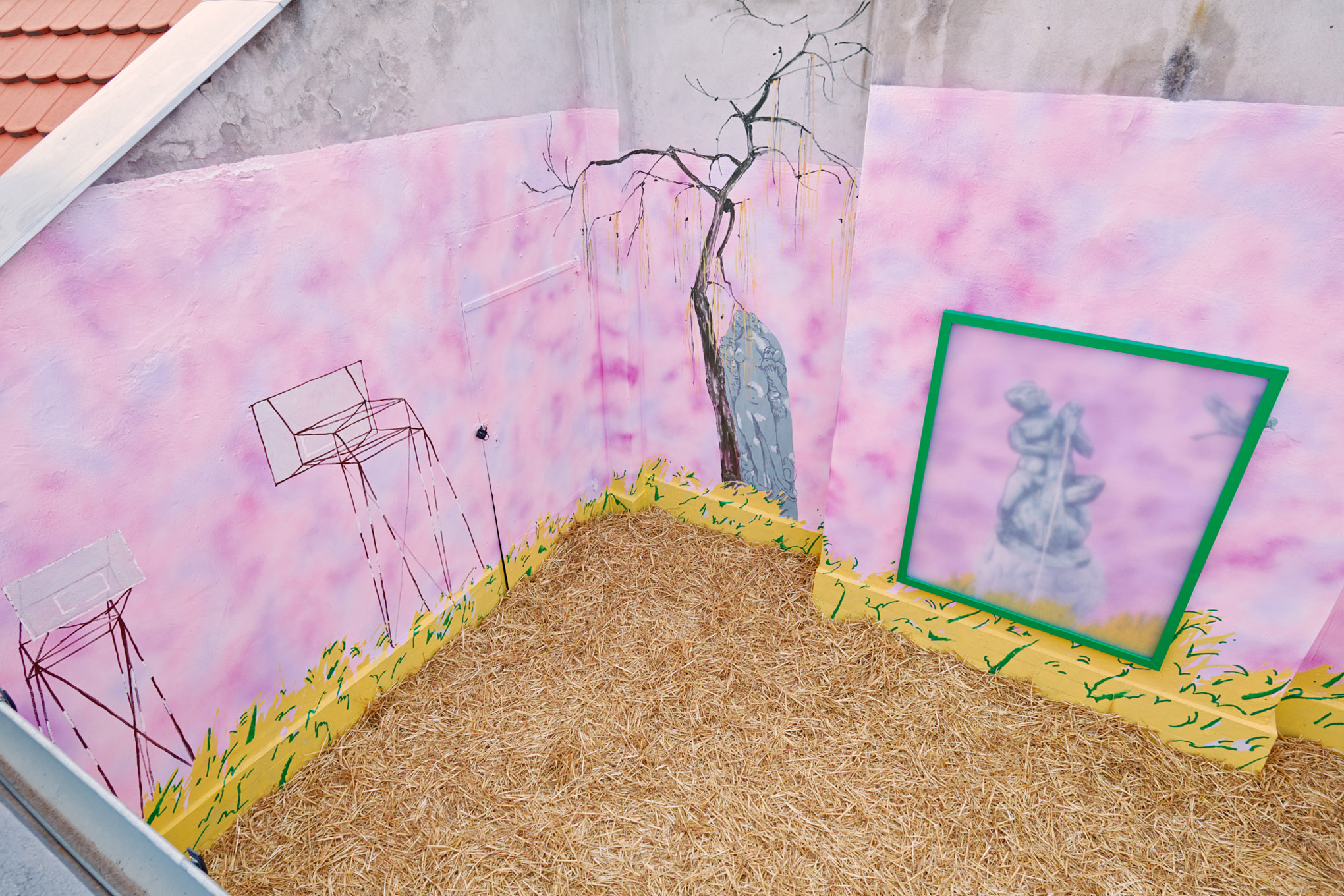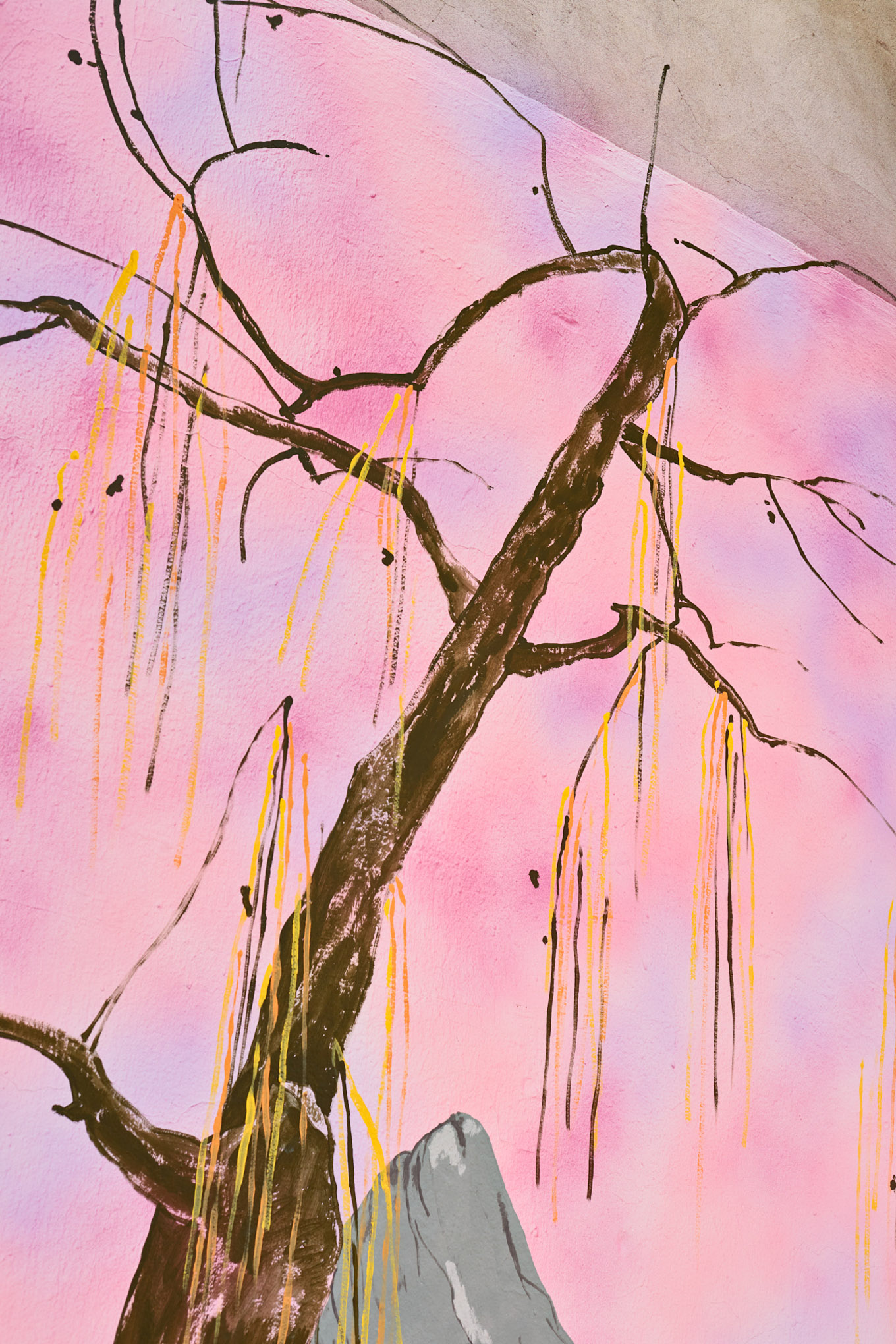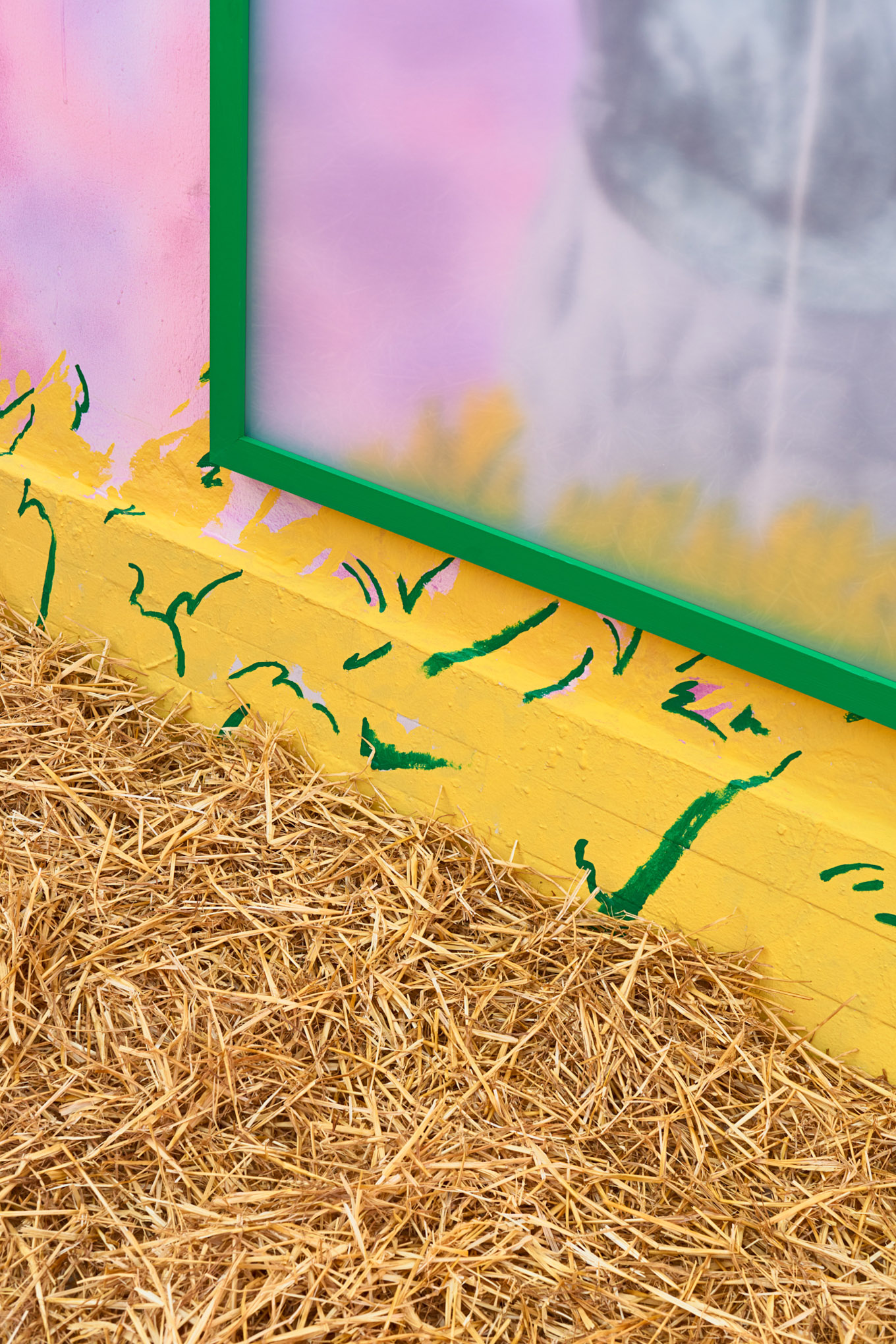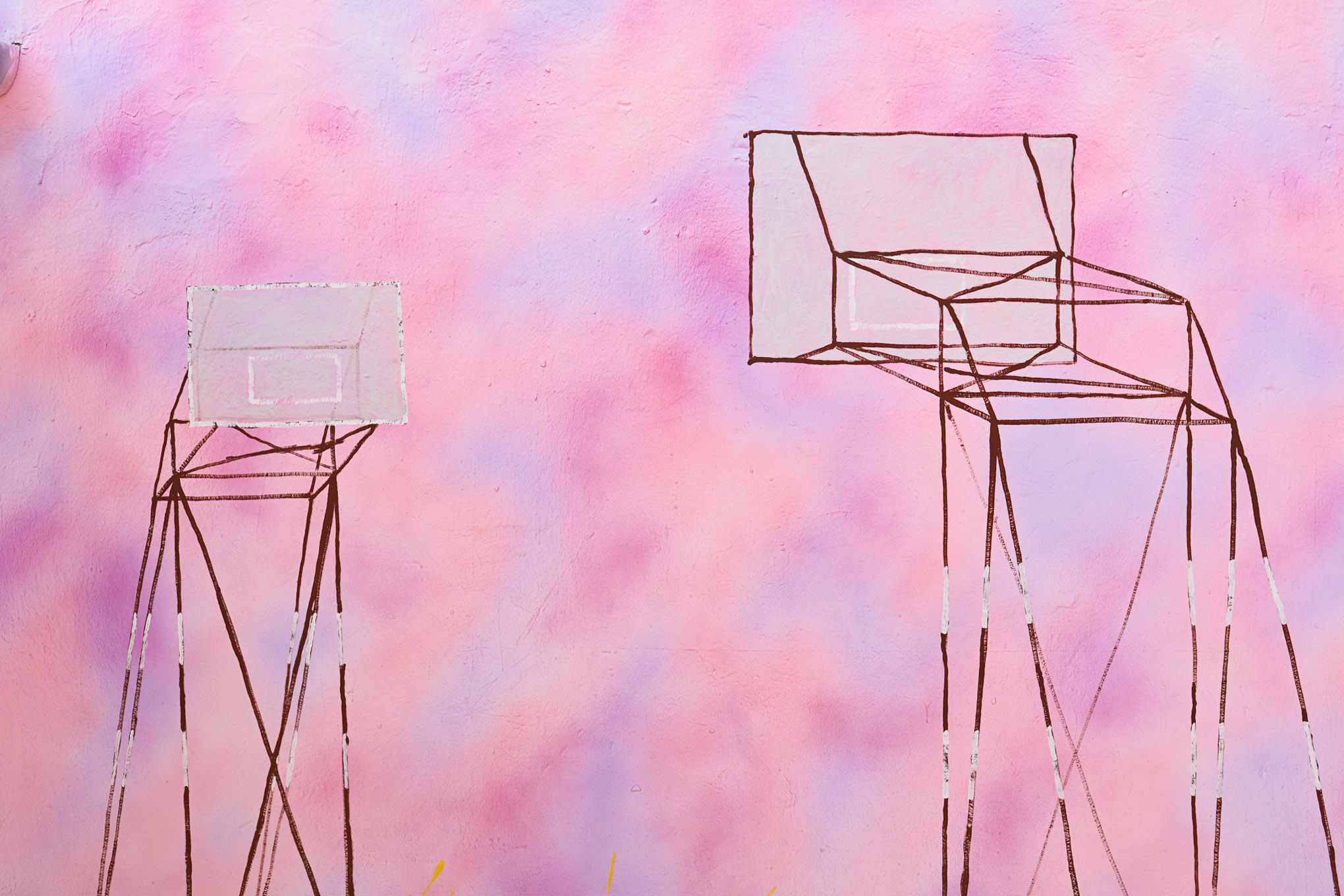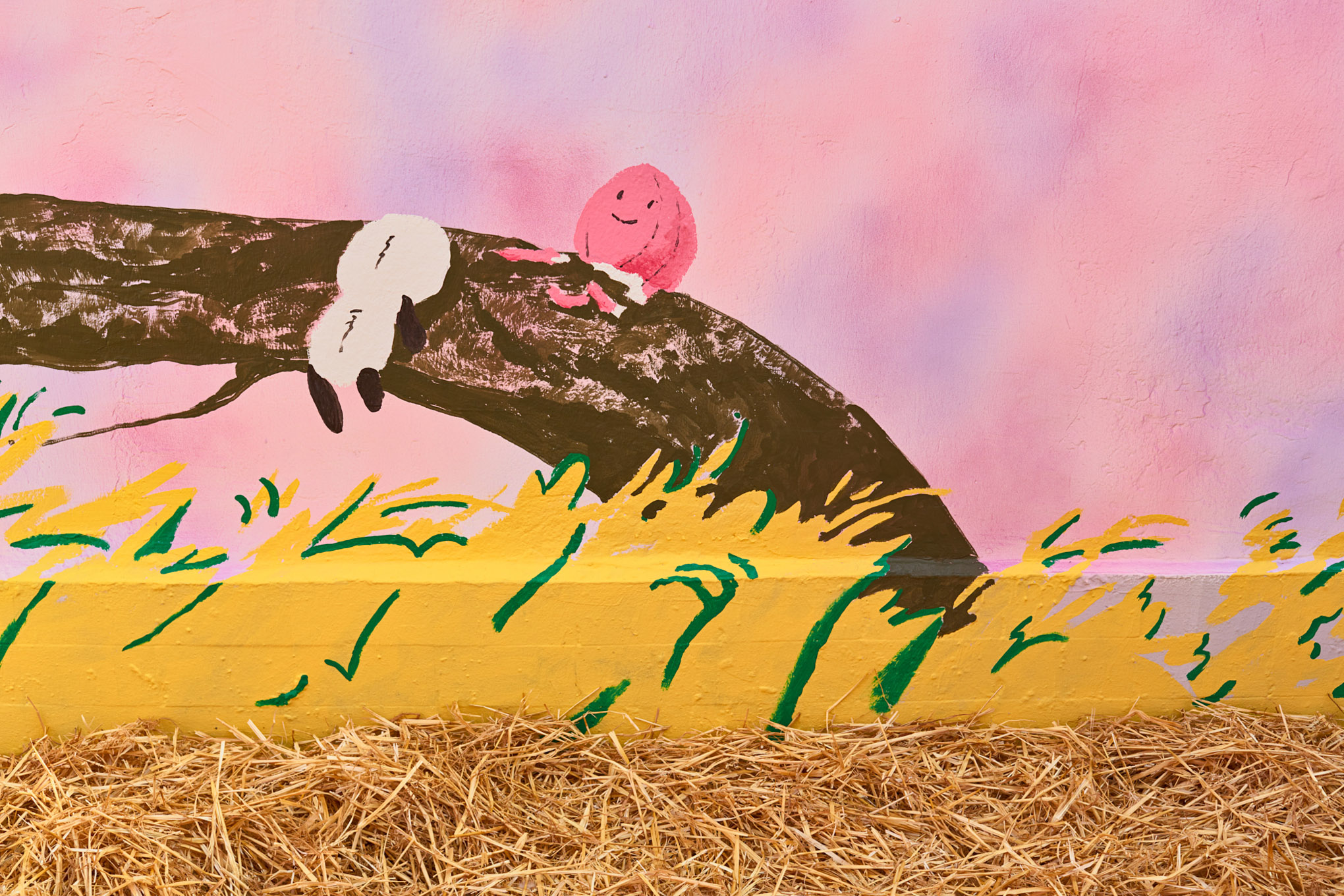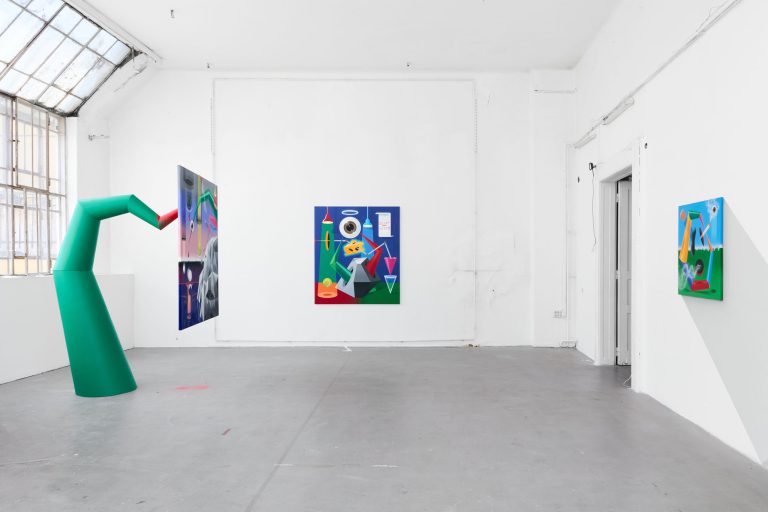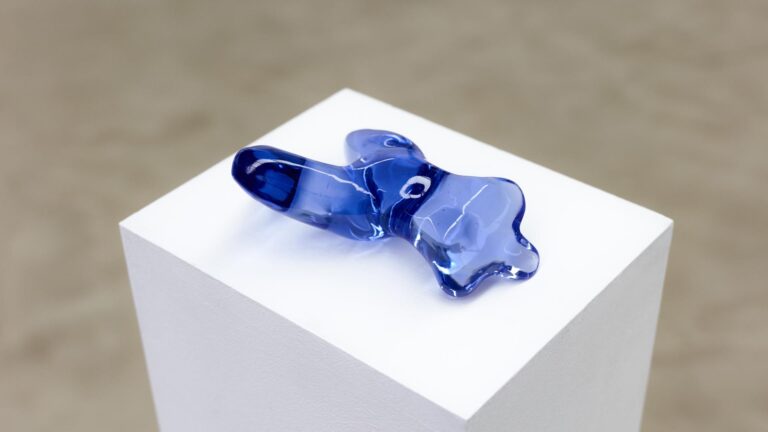Artist: Attila Bagi
Exhibition title: Clear like the shape of memories
Curated by: Peter Bencze
Venue: ENA Viewing Space, Budapest, Hungary
Date: July 1 – August 14, 2023
Photography: © Aron Weber, all images copyright and courtesy of the artists, Everybody Needs Art
During the last few years, Attila Bagi has been analysing and interpreting the various aspects of easel painting in his Unikon-type exhibitions, which resembled environments at first glance but also reflected on the medium of painting. He began his experiments in 2018 in the exhibition space of MŰTŐ (Water swim with me) — located back then in Heinrich Court. Two years later, he exhibited on the abandoned 8 th floor of Professors’ House (Under the skin), a venue condemned to be demolished.
The exhibition, Clear like the shape of memories, showcases a sophisticated continuation of this core idea and will be presented this summer at ENA Viewing Space.
Located on the top-level corridor of an apartment building in Buda, the open-air, enclosed space —which is not used by the residents— has been appropriated by Bagi according to his own terms, and has been reimagined as a hybrid area or field covered in a veil of pink. On the four walls of the rooftop terrace, Bagi painted dreamlike scenes drawn from his private experiences of the past year, connected by a layer of scrawled straw on the floor. The material, used as a bridge of communication and a catalyst, refers —to a certain extent— to the exhibition of Bagi and Mónika Kárándi titled Just a perfect day at Longtermhandstand, which took place last autumn. Attila Bagi’s complex practice incorporates several elements that refer to his art and his private life, such as the chewed-up toys of their dog, Rozi, or the images condensed into symbols from their shared experiences (basketball hoops, antique sculptures, the interior of their apartment). Nevertheless, even without having prior knowledge concerning these, the visionary work, which extends into every corner of the space, can be interpreted and experienced, moving along the axis of figuration and abstraction. Two isolated episodes stand out from the wall-to-wall background of the mural thanks to simple wooden frames placed on the surface. One such episode depicts a fountain in a typically Renaissance style, and the other shows an interior view of the apartment from the window of the artists’ home. A blurry plexiglass was placed in front of the completely ordinary, raw, wooden frames, which are painted green and resemble FISKBO-type picture frames available at Ikea. The framed scenes, nevertheless, are clearly visible. With their delicate symbols, the mural’s veiled episodes become pleasantly blurred, accentuated and unforgettable simultaneously.
It is only following a closer inspection that it becomes clear that the isolated segments in question are, in fact, independent works of art separated from the background. The mural that dominates the entire space, however, is not a showy, deceptive set design element; they clearly all belong together as partners and allies. Once again, Bagi plays with centring the blind spots that emerge between the realms of vision and perception. With his exhibition, Bagi has created a situation where observing the totality of the work is rendered impossible: it is due to the blind spots between the observations encoded into the inaccessible space’s various units that the artwork realises itself. In other words, it is an operation connected to the visual manipulations of the eye, of obscuring the image with an image. The illusion of an illusion. It is not the type of illusion described in the ancient anecdote of Zeuxis and Parrhassius, nor is it a straightforward trompe-lœil illusion, deceiving the eye. Rather, it is an illusion somewhere at the intersection of perception and observation, most akin to the mystery of detective stories or magic tricks played out right in front of our eyes. Once the deception is revealed, we immediately discover the obvious nature of the solution, the hitherto invisible but now glaringly obvious clues.
The environmental work —extended to the entire roof terrace— deals thus with the role and function of the traditional easel painting in (the exhibition) space. This unfolds with fragile, blurred, ethereal images of memories highlighted from the infinite. Finding these requires nothing more than paying attention and observing what we are paying attention to. The exhibition, realised in the off-space that has been running for almost a decade now, thus, focuses on the act of reflective observation.
-Kristóf Kovács (Gergely Sajnos) crime scene investigator + An ’Unikon exhibition’ is a one-artwork show. The term was devised by Tamás St. Auby, — translator’s note.

